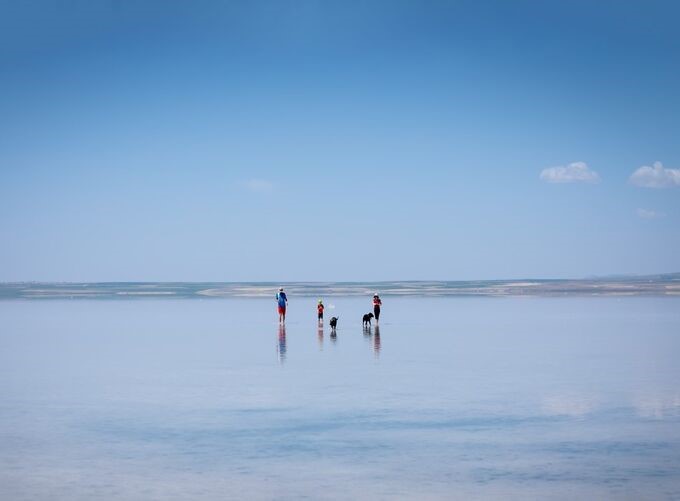
Exploring Turkey's Climate
Turkey, a country that straddles both Europe and Asia, offers a diverse climate that reflects its varied geography. From the Mediterranean coastline to the arid interior and the snowy heights of the Anatolian plateau, Turkey’s climate can range from sun-soaked beaches to snowy mountains. This comprehensive guide will explore Turkey's climate in detail, offering insights into its different regions, seasonal variations, and practical tips for travelers.
Introduction to Turkey's Climate
Turkey's unique geographical location, with its vast landscapes and diverse topography, results in a climate that varies significantly across the country. Understanding Turkey’s climate is crucial for planning a successful trip, whether you’re seeking sun, snow, or mild weather.
The Mediterranean Coast of Turkey
The Mediterranean coast of Turkey, including cities like Antalya, Marmaris, and Bodrum, is renowned for its pleasant climate, characterized by:
Hot, Dry Summers:
Summers are typically hot and dry, with temperatures often exceeding 30°C (86°F). The Mediterranean climate is marked by clear skies and very little rainfall during this season.
Mild, Wet Winters:
Winters are mild with temperatures ranging from 10°C to 15°C (50°F to 59°F). Rainfall increases during the winter months, though it remains relatively moderate compared to other regions.
Best Time to Visit Turkey Mediterranean Coast of Turkey:
Late spring (April to June) and early autumn (September to October) are ideal for enjoying warm temperatures and fewer crowds.
The Aegean Coast of Turkey
The Aegean coast, including cities like Izmir and Kusadasi, experiences a climate similar to the Mediterranean but with slightly more variation:
Warm, Dry Summers:
Summer temperatures can be hot, often reaching around 30°C (86°F). The weather is generally dry, with occasional breezes from the Aegean Sea.
Cooler Winters:
Winters are cooler compared to the Mediterranean coast, with temperatures ranging from 8°C to 15°C (46°F to 59°F). Rainfall is moderate.
Best Time to Visit:
Best time to visit Turkey is Spring (March to May) and autumn (September to November) are perfect for comfortable temperatures and fewer tourists.
The Black Sea Coast of Turkey
The Black Sea coast, including cities like Trabzon and Rize, has a distinctive climate influenced by its lush, green landscapes:
Mild Summers:
Summers are mild with temperatures ranging from 20°C to 25°C (68°F to 77°F). The region experiences higher humidity and occasional rain showers.
Cool, Wet Winters:
Winters are cool and wet, with temperatures ranging from 5°C to 10°C (41°F to 50°F). The region receives significant rainfall throughout the year.
Best Time to Visit Black Sea Coast of Turkey:
Late spring (May to June) and early autumn (September to October) are ideal for exploring the region’s natural beauty and avoiding the peak rainy season.
The Central Anatolian Region of Turkey
The Central Anatolian region, including cities like Ankara and Cappadocia, experiences a continental climate:
Hot, Dry Summers:
Summers are hot, with temperatures often exceeding 30°C (86°F). The region has low humidity and little rainfall during this period.
Cold, Snowy Winters:
Winters can be quite cold, with temperatures dropping below freezing. Snowfall is common, especially in higher elevations.
Best Time to Visit Anatolian Region of Turkey:
Spring (April to June) and autumn (September to November) offer pleasant temperatures for exploring outdoor attractions like Cappadocia’s rock formations.
The Eastern Anatolian Region of Turkey
The Eastern Anatolian region, including cities like Erzurum and Van, has a more extreme continental climate:
Hot Summers:
Summers can be quite hot, with temperatures reaching around 30°C (86°F). The region is dry with low humidity.
Severe Winters:
Winters are harsh and snowy, with temperatures often dropping well below freezing. Snow can be heavy, especially in mountainous areas.
Best Time to Visit Eastern Anatolian of Turkey:
Late spring (May to June) and early autumn (September to October) are the most favorable times to visit this region, avoiding extreme cold and snowfall.

Seasonal Climate Patterns of Turkey
Spring (March to May)
Spring in Turkey is a transitional period marked by:
- Mild Weather: Temperatures are generally mild and pleasant, ranging from 15°C to 25°C (59°F to 77°F) depending on the region.
- Blossoming Nature: Spring is a beautiful time to visit, with blooming flowers and greenery, especially in regions like the Aegean and Mediterranean coasts.
Activities: Spring is ideal for outdoor activities such as hiking, sightseeing, and exploring Turkey’s natural beauty.
Summer (June to August)
Summer is the peak tourist season in Turkey, characterized by:
- Hot Temperatures: Coastal regions experience hot, dry weather, while inland areas can be extremely hot. Temperatures can exceed 35°C (95°F) in some regions.
- High Tourist Activity: Popular destinations like Istanbul, Antalya, and Bodrum are crowded with tourists during this season.
Activities in Turkey:
Summer is perfect for beach vacations, water sports, and exploring historical sites.
Autumn (September to November)
Autumn offers a favorable climate with:
- Cooling Temperatures: Temperatures gradually cool down, ranging from 15°C to 30°C (59°F to 86°F) depending on the region.
- Reduced Crowds: Tourist numbers decrease, making it a great time to visit popular destinations without the summer rush.
Activities in Turkey:
Autumn is ideal for sightseeing, cultural tours, and enjoying Turkey’s picturesque landscapes.
Winter (December to February)
Winter in Turkey varies significantly by region:
- Mild Coastal Winters: Coastal areas have mild winters with temperatures ranging from 10°C to 15°C (50°F to 59°F).
- Cold Inland and Eastern Regions: Inland and eastern regions experience cold temperatures and snowfall, making it a good time for winter sports in areas like Erzurum.
Activities in Turkey:
Winter is suitable for exploring cultural sites, enjoying winter sports, and experiencing local festivals.
Practical Travel Tips
Packing Tips
- Layered Clothing: Due to the varying temperatures, especially in transitional seasons, packing layered clothing is essential. Include light clothing for warmer regions and warmer layers for cooler areas.
- Comfortable Footwear: Turkey’s diverse terrain often requires comfortable walking shoes or hiking boots, particularly if you plan to explore historical sites or natural landscapes.
Health and Safety
- Hydration: Stay hydrated, especially during the hot summer months. Carry a water bottle and drink plenty of fluids.
- Sun Protection: Use sunscreen, wear a hat, and protect your eyes from the sun, particularly in coastal areas and during peak summer.
Local Customs and Etiquette
- Respect for Local Culture: Turkey has a rich cultural heritage, and understanding local customs and etiquette is important. Dress modestly when visiting religious sites and be mindful of local traditions.
Regional Considerations
- Coastal Regions: Enjoy beach activities and explore seaside towns. Consider visiting during the shoulder seasons (spring and autumn) for milder weather and fewer crowds.
- Inland Regions: Prepare for variable temperatures and consider visiting during spring or autumn for optimal weather conditions.
Turkey Vacation Packages: Plan Your Trip
Turkey’s diverse climate offers something for every traveler, from sun-soaked beaches to snowy mountains and everything in between. By understanding the regional variations and seasonal patterns, you can plan a trip to Turkey that aligns with your preferences and interests.
Whether you’re looking to relax on the Mediterranean coast, explore the historical wonders of Istanbul, or enjoy the natural beauty of Cappadocia, Turkey’s climate plays a significant role in shaping your travel experience. Embrace the unique opportunities each season and region provides, and make the most of your journey through this fascinating and diverse country.



